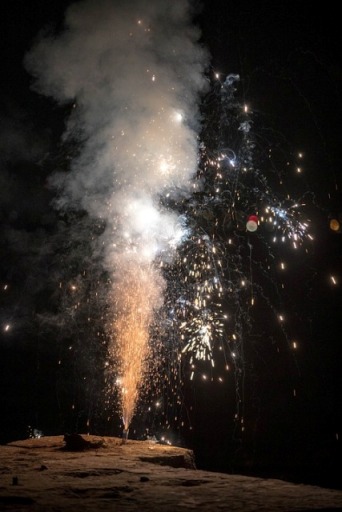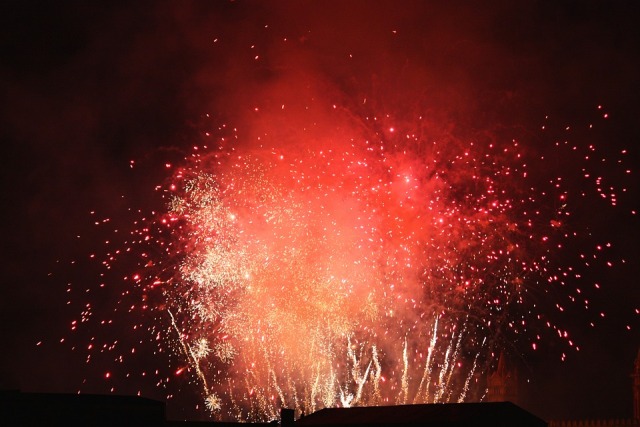New Year's Eve! The night with the highest atmospheric pollution
Hello friends, happy new year to all!

Image credit: pixabay.com
The problem is that pyrotechnics generate serious pollution episodes, since air quality standards are exceeded by the large amount of smoke and fine particles that are released into the atmosphere.
What perhaps few know, or perhaps prefer to ignore, is that these spectacles of explosions and lights that illuminate the sky have important consequences, in addition to the known harmful effects they have for pets and local fauna, these fleeting flashes fill the air with very polluting particles, so fine that they can seep into the lungs.
Suffice it to say that the gunpowder that makes up pyrotechnics contains a wide variety of chemical compounds, mostly oxidizing salts such as potassium chlorate, barium chlorate, sodium chlorate, strontium chlorate, potassium perchlorate, ammonium perchlorate, barium nitrate, among others; but not only that, since regardless of the salt, the striking colors are provided by metallic cations, for example the lilac color is provided by potassium, the intense green color by copper, the red color is produced by lithium, while aluminum can provide white light.

Image credit: pixabay.com
This mixture of salts and metallic elements form a cocktail of pollutants that are released into the atmosphere at the time of the explosion. In addition to the CO released during the burning of gunpowder, very fine particles of between 2.5 and 10 μm are produced, known as PM 2.5 and PM 10, these are solid particles of dust, ash, metals among others that are spread in the atmosphere, usually derived from the burning of fuels, and are capable of entering deep into the lungs.
And the problem is not only for the spectators of that play of lights, the issue is that these particles can remain suspended in the air for several hours or even a whole day, affecting the quality of the air we breathe and giving a feeling of haze. For example, the National Meteorology and Hydrology Service of Peru reported that on January 1, air pollutants in the metropolitan area increased by 55% due to fireworks. Likewise, in the metropolitan area of the Valley of Mexico, environmental authorities reported an extraordinary amount of emissions that increased PM10 levels throughout the Northeast area of the Valley of Mexico, for which these authorities recommended avoiding outdoor activities.

Image credit: pixabay.com
According to the World Health Organization, exposure to PM 2.5 particles can be serious for many people, as they have the potential to cause serious respiratory illnesses or aggravate existing conditions in people with respiratory and cardiovascular conditions. And the pollution peak caused in the very short term by pyrotechnics not only affects people's health, but this accumulation of pollutants in the air also contributes to global warming.
The scientific community has long warned about the damage caused by fireworks on animals and various ecosystems, but the damage to the planet is already beginning to be worrying. Many countries have already begun to regulate the use of fireworks, as in China, which showed that banning them during some celebrations could reduce by up to 8% the concentration of PM2.5 during the days of such celebrations.
The fireworks displays may only last a few minutes, but their effects can last for days or months, since the amount of substances and particles that are released can remain suspended in the air, which is equivalent to releasing in a single night the amount of particles equivalent to months of road traffic.
It is therefore very important to raise public awareness on this issue, as usually the show prevails over safety and respect for the planet, and perhaps ask ourselves if we really need pyrotechnics as a sign of celebration.
References
Wikipedia.org. Pirotecnia
Andina.pe. Año nuevo 2023: Lima registró mayor contaminación del aire por pirotécnicos
Forbes.com. De nuevo la pirotecnia...Alertan por contaminación en el Valle de México
Organización Mundial para la Salud. Contaminación del aire ambiente (exterior)
Defilement is unfortunately in everything man cannot choose
I know this must be so harmful and have some side effects too on our health and the pollution in conclusion..
Here it’s a lot of knockout and even noise pollution. Anyways I hope those involved could be able to see this and learn